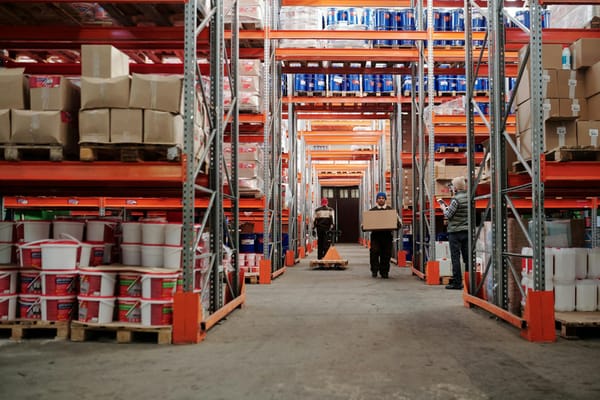
On June 20, Bill C-5, the so-called One Canadian Economy Act, passed in the House of Commons, despite warnings that the legislation will erode democratic oversight in the name of economic development.
This “major projects” bill essentially grants the federal government the ability to side-step regulatory consultations and fast-track economic initiatives it deems to be in the national interest.
The legislation amends the Free Trade and Labour Mobility in Canada Act and the Building Canada Act, removing supposed “barriers” to the internal trade of goods and services, streamlining labour mobility and credential recognition, and perhaps most notably, granting sweeping powers to cabinet to pre-approve projects designated to be in “the national interest.”
For example, the government can now move more quickly to put shovels in the ground, avoid regulatory barriers and postpone stakeholder consultations required by the Impact Assessment Act and other regulations
The bill passed through the House and Senate quickly, enjoying the support of the Conservatives and garnering only partial pushback from NDP and Bloc Québécois members of Parliament.
The NDP, for example, attempted unsuccessfully to split the legislation, arguing that the labour and trade components were unrelated to the “major projects” amendments. NDP MP Leah Gazan then secured changes to the bill to prioritize union jobs on major projects, but nevertheless warned against the law’s potential impacts on Indigenous peoples.
The law received royal assent on June 26, less than a month after first being introduced in Parliament.
Responding to growing calls from the business community to remove largely fictitious “internal trade barriers” within Canada, Bill C-5 followed a meeting between Prime Minister Mark Carney and provincial and territorial leaders meant to shore up the case for expanded trade and development. The bill’s passage was predictably welcomed by the Canadian Chamber of Commerce, one of the largest business organizations in Canada.
The law is expected to largely be directed at energy infrastructure, with Carney signalling support for east-west “energy corridors,” which could mean more pipelines and electricity grid capacity, expanded port facilities, and new mining and resource-extraction projects.
Predictably, the law generated considerable pushback from Indigenous nations and environmental organizations and activists. In several ways, Bill C-5 could roll back the modest changes made during the Justin Trudeau years that allowed Indigenous peoples greater input over decision-making related to development and resource extraction. By granting enormous discretionary powers to deem projects in the national interest to government, the law risks making violations of treaty rights much more likely.
To counter Indigenous opposition, the Liberals argued that fast-tracked infrastructure and resource-extraction projects will involve Indigenous communities in resource management and be mutually beneficial. “Indigenous partnership is a critical component of this legislation, and fulsome consultation will be pivotal to the success of future projects,” said the government’s press release following the bill’s passage.
However, the speed at which the legislation was tabled and brought into force did not allow adequate time to provide feedback and shape the final draft of the bill, according to many Indigenous nations and organizations. Kebaowek First Nation Chief Lance Haymond referred to the law as setting the conditions for “Idle No More 2.0,” referring to protests opposing resource extraction and violations of Indigenous sovereignty that swept across the country in 2012 and 2013.
A failed amendment to Bill C-5 introduced in the Senate sought to protect the principle of “free, prior and informed consent” and to ensure Indigenous communities create power to influence development decisions.
Others have warned that Bill C-5 is a frontal attack on democracy. As Stuart Trew and Marc Lee at the Canadian Centre for Policy Alternatives aptly put it, “As a general rule, we should raise an eyebrow anytime a government uses the threat of an alleged national emergency to grant themselves sweeping new executive powers.” Adverse social consequences, such as increasing greenhouse gas emissions or habitat degradation, may be the price paid for more rapid development. As Trew and Lee further point out, vagueness concerning what constitutes a project in the “national interest” could lend itself to backroom deals with corporations.
Despite the considerable risks presented by Bill C-5, fulsome labour opposition was largely absent. The Canadian Labour Congress and the Professional Institute of the Public Service of Canada provided partial endorsement of the bill but advocated amendments aimed at reining in ministerial powers, clarifying environmental and accountability mechanisms, protecting labour standards, adding “Buy Canada” and “Buy Clean” provisions, and guaranteeing a right-based consultation process with Indigenous nations. Such amendments of course were not forthcoming.
The Canadian Association of Professional Employees, another union of federal public servants, did express opposition to Bill C-5 over the latter’s environmental risks and undermining of Indigenous rights.
As might be expected, the building trades unions strongly supported Bill C-5, while most other unions remained largely silent.
Labour’s absence in the fight against Bill C-5 is a strategic misstep. This was an opportunity to build stronger ties of solidarity with Indigenous peoples and others opposing the government’s undemocratic power grab. Even tentatively supporting a law that threatens Indigenous sovereignty and environmental degradation in the name of jobs is no recipe for building coalition power.
With similar laws aimed at concentrating executive power in order to fast-track development projects in the works in Ontario and British Columbia, we need a broad base of opposition more than ever.
Many on the left warned that the trade war brought on by United States President Donald Trump would embolden Canadian business and its political representatives to attack workers and vulnerable populations in the name of safeguarding the Canadian economy. Bill C-5 and other provincial laws driven by comparable logics are a manifestation of this dynamic. Governments are attempting to bypass regulation, consultation and other democratic mechanisms in the name of countering the U.S. trade war and protecting Canada.
Elbows are up, but they’re being directed at Indigenous communities and the regulatory state. In response, Canadian labour should be standing in principled opposition, not remaining on the sideline and hoping for crumbs.
Recent Class Struggle Issues
- July 28 | The Income Gap In Canada Has Reached A Record High
- July 21 | Amazon Workers In B.C. Have Won Union Certification
- July 14 | Uber Drivers Have Unionized For The First Time In Canada
- July 7 | CUPE Is Fighting The Zionist-Instigated Firing Of A Paramedic







